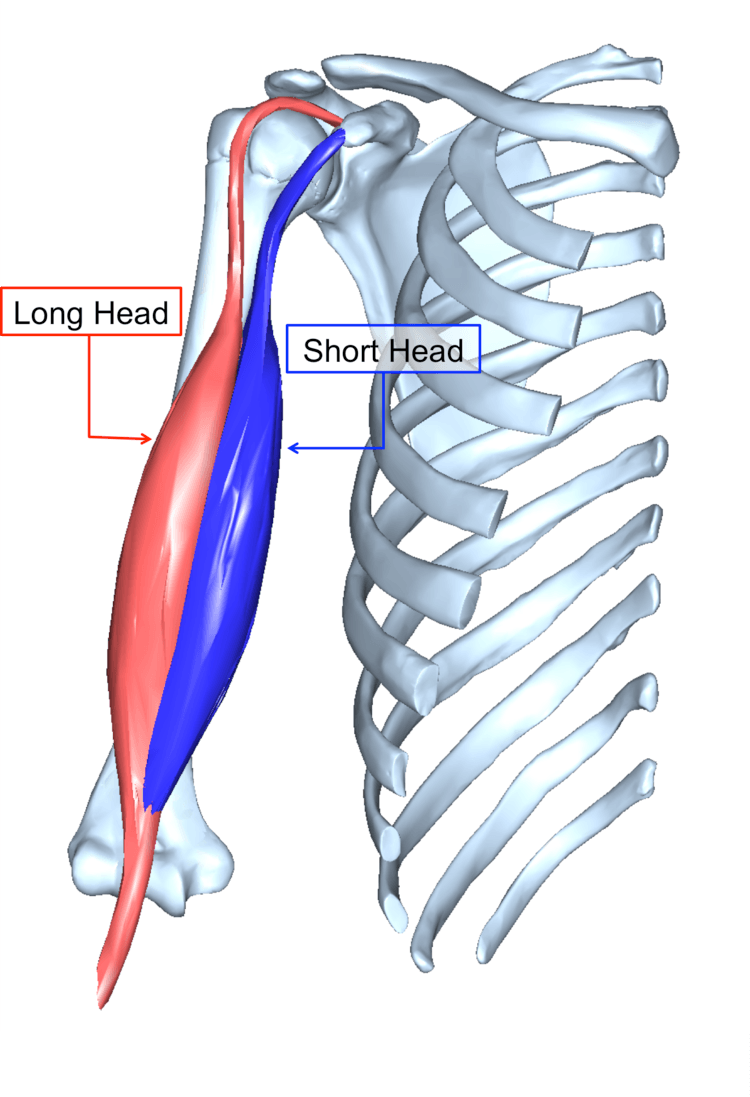Biceps Tenodesis

The biceps muscle consists of two portions or "heads" called the short head (blue) and the long head (red). The short head originates from a bony prominence on the front of the shoulder blade (scapula) and is rarely injured. The long head, in contrast, originates from the top of the socket (glenoid), then passes through the shoulder joint, turns sharply around the humeral head, and courses down the arm. As a result of this complex anatomy and close proximity to other commonly injured structures in the shoulder (labrum, rotator cuff, etc.), the long head of the biceps tendon is often injured itself. Read more about Biceps Tendon Injury here.
Biceps tenodesis is a surgical treatment for biceps tendon injury or superior labral tear. The biceps tendon, which normally passes through the shoulder joint and attaches at the top of the socket (glenoid), can become injured in the joint or at its attachment to the socket.
In biceps tenodesis, the injured portion of the tendon is removed, and the remaining tendon is reattached to the upper part of the arm bone (humerus). Biceps tenodesis can be done either arthroscopically or through a small cosmetic incision just below the shoulder. Dr. Driscoll has expertise in the latest techniques for both methods and will select the treatment that is best for each particular patient.
Biceps tenodesis is an outpatient surgery. Patients go home the same day with a shoulder immobilizer sling. The sling is worn for 4-6 weeks, but may be removed for bathing and physical therapy. Most patients are allowed to return to their activities by 3 to 6 months after surgery.
